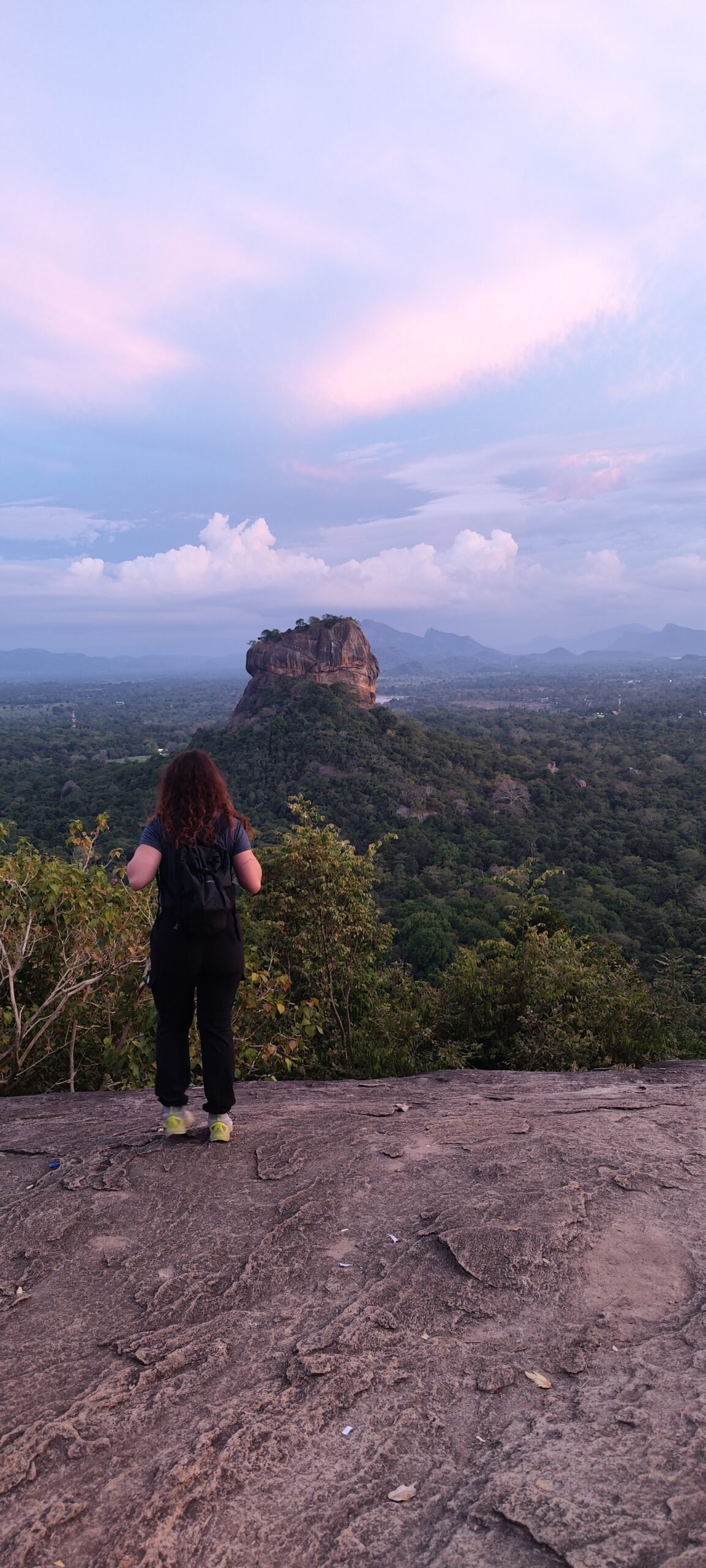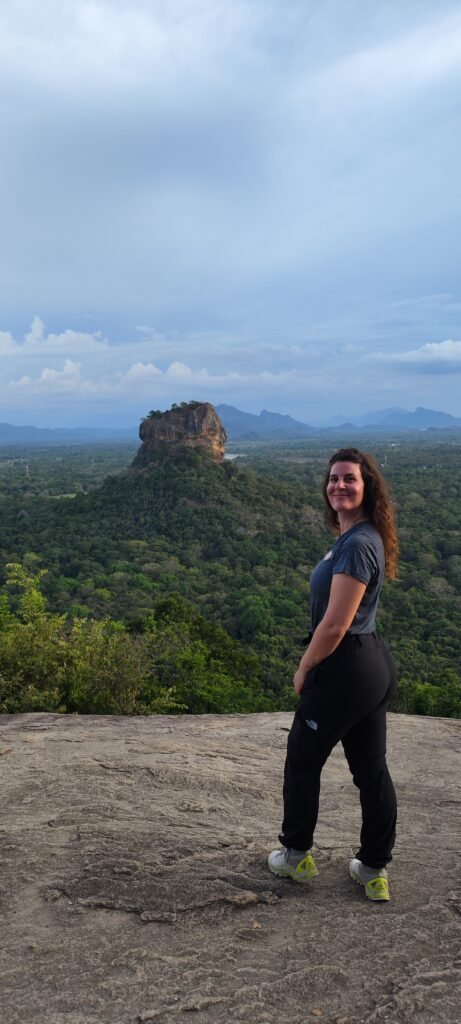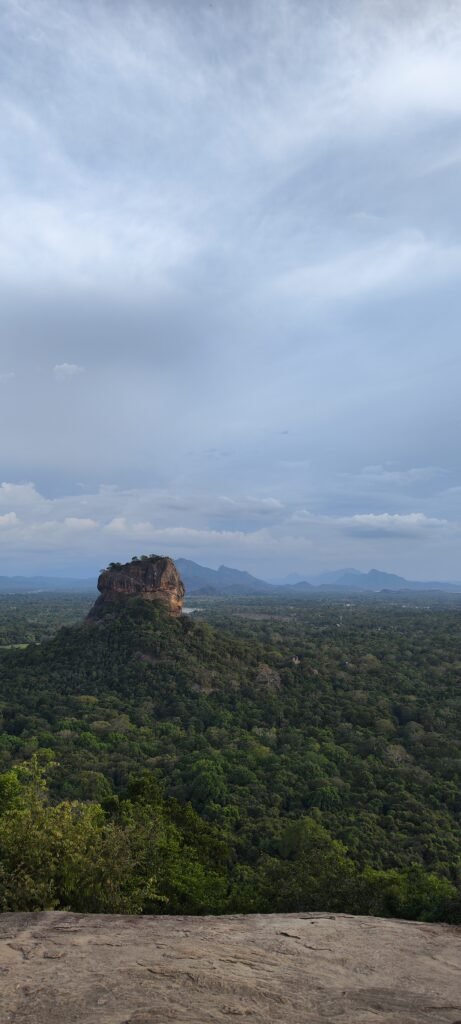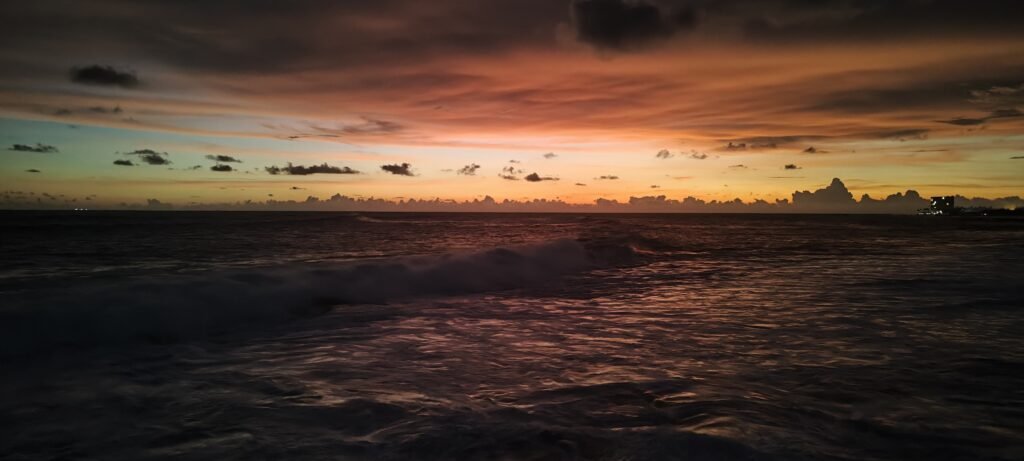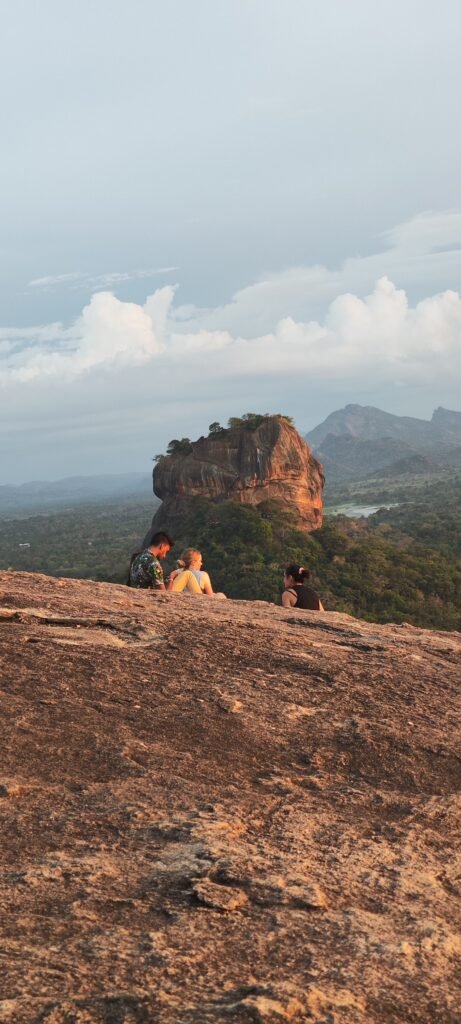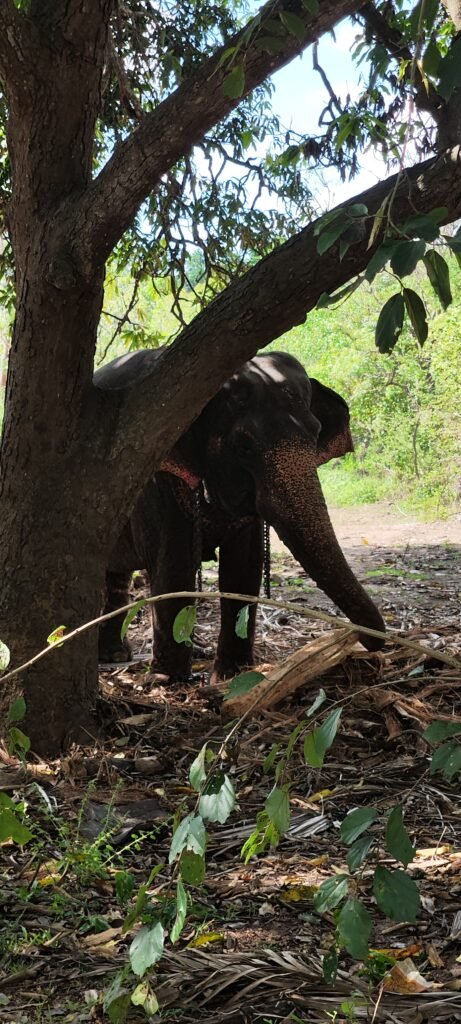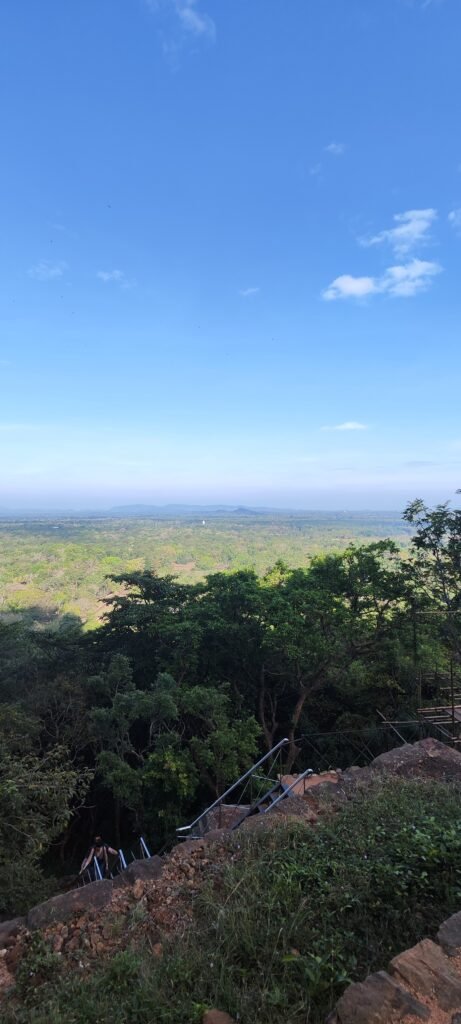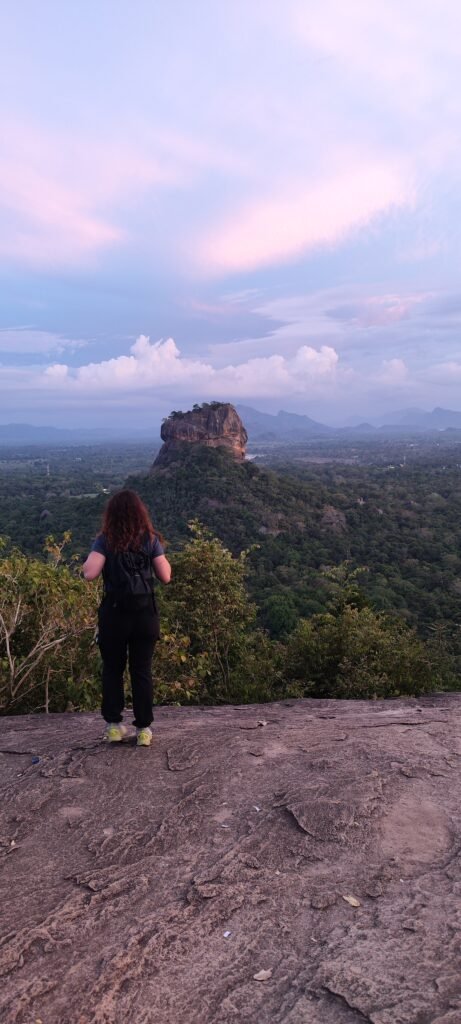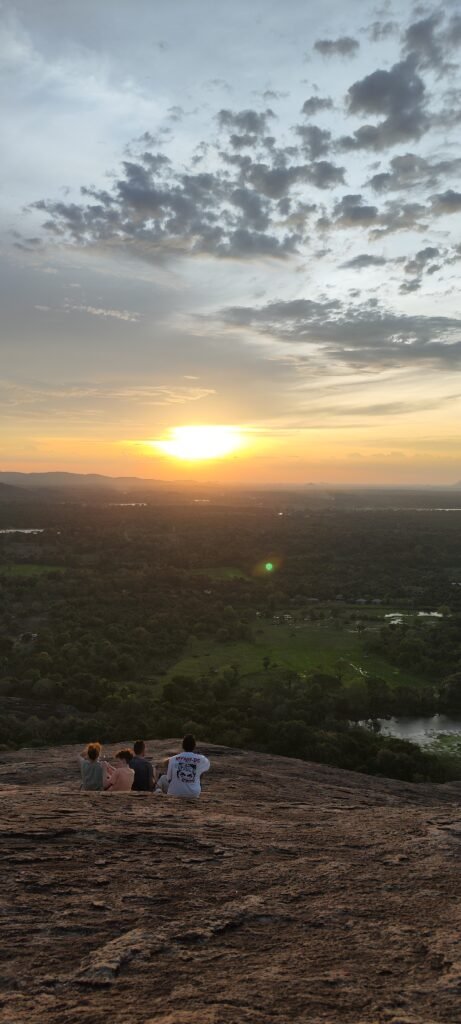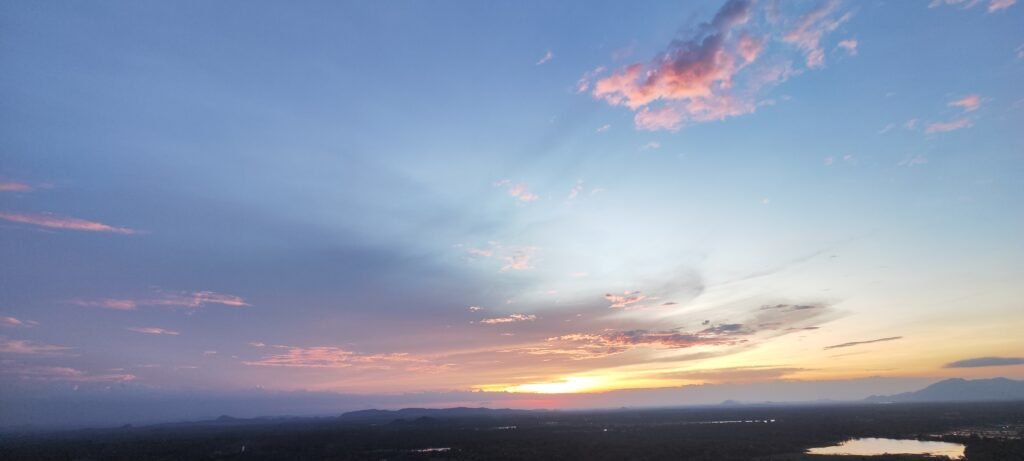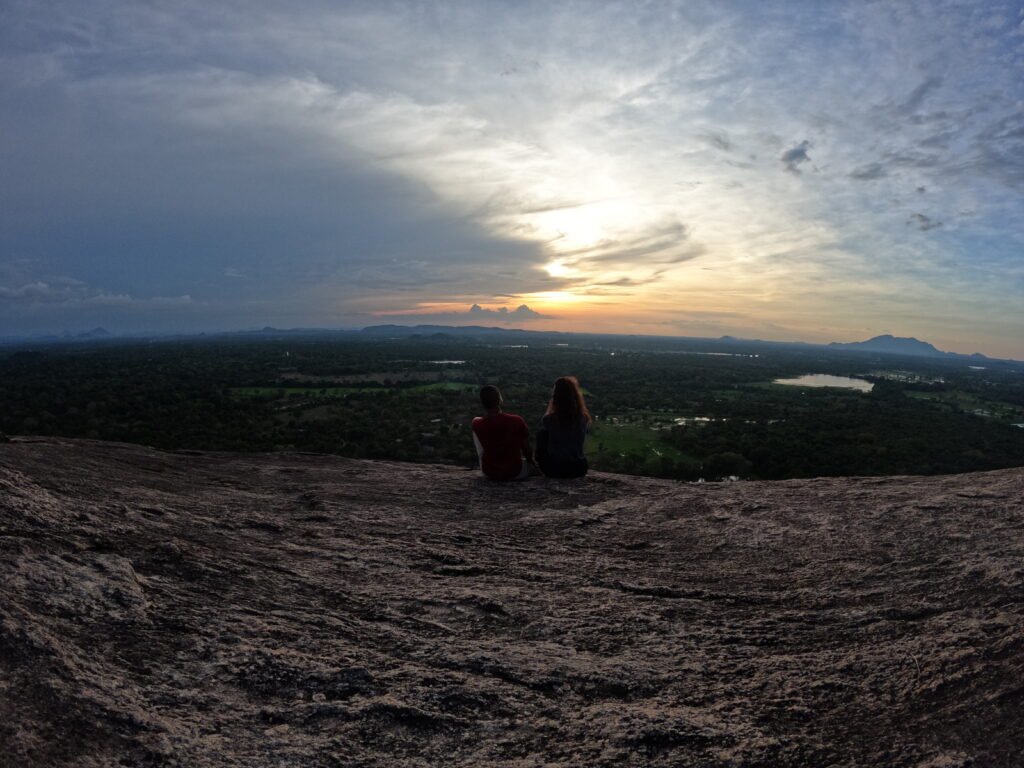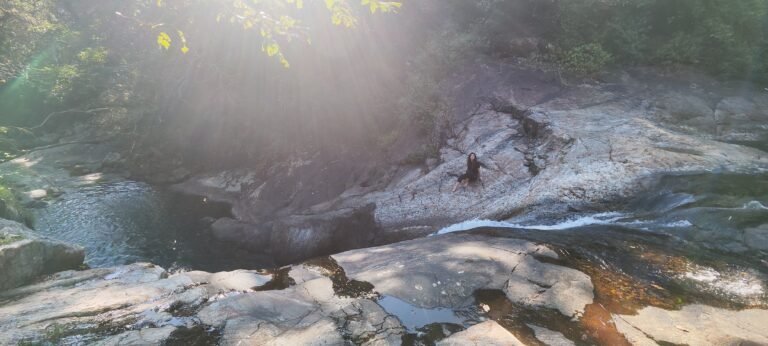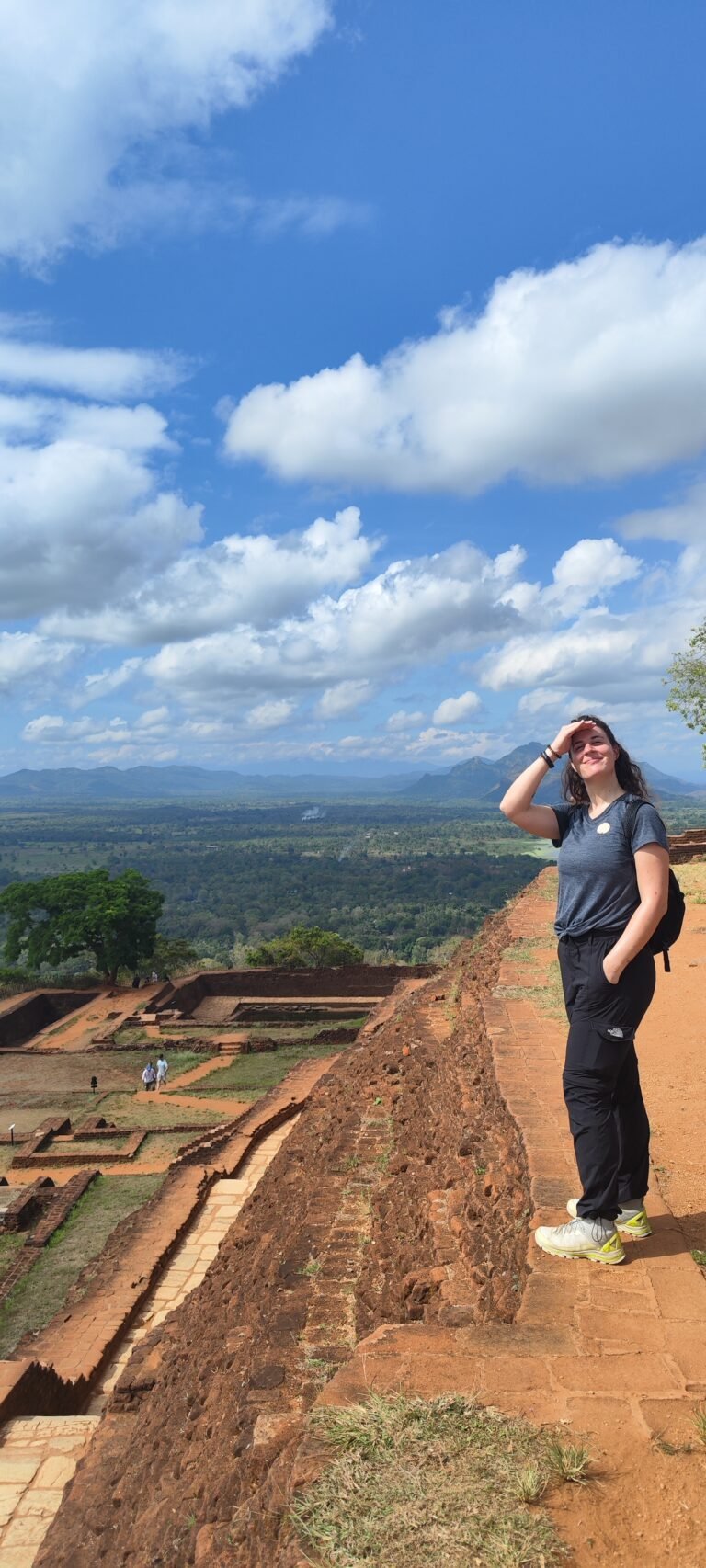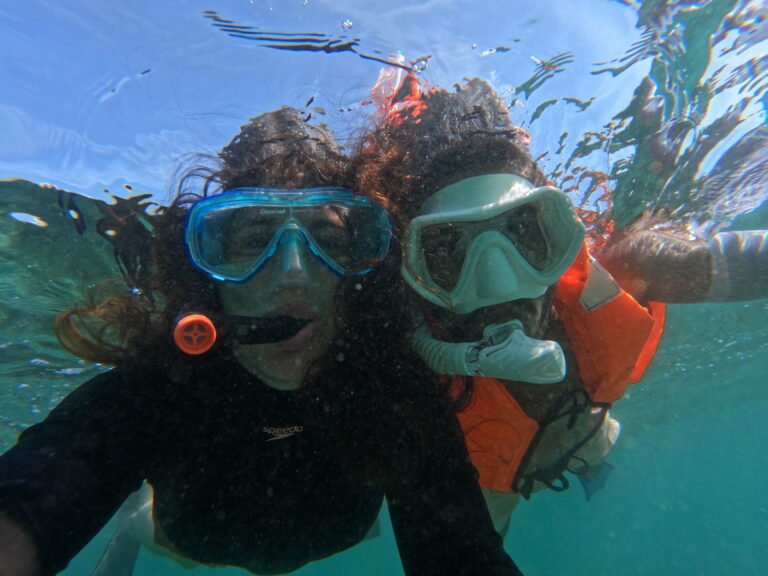A Journey Through Sri Lanka’s Cultural and Natural Marvels
Sri Lanka, often referred to as the “Pearl of the Indian Ocean,” offers an abundance of historical, cultural, and natural wonders. Among its most iconic landmarks are the majestic Sigiriya and Pidurangala, a Rock Fortress and the neighboring Rock. These sites are not only visually stunning but also steeped in history and legend, making them must-visit destinations for any traveler exploring Sri Lanka.

Arriving in Sigiriya
Currently traveling around Sri Lanka by scooter, I arrived at a guesthouse near Sigiriya in the evening. The village of Sigiriya, surrounded by lush greenery and serene landscapes, serves as the perfect base for exploring this UNESCO World Heritage Site.
After settling in, I headed to Pidurangala Rock for a small hike. Known for its breathtaking views of Sigiriya Rock, Pidurangala is a favorite spot for those seeking an unforgettable sunset experience.
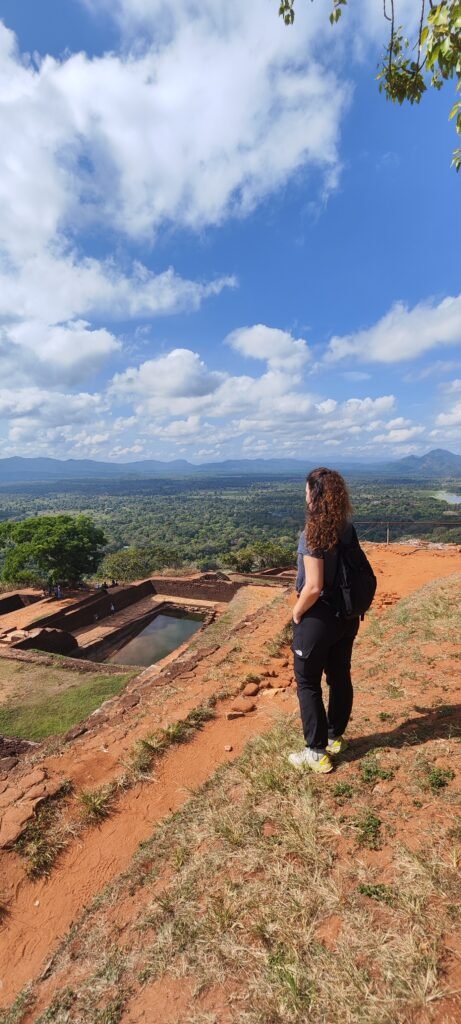
Pidurangala Rock: A Hidden Gem
The Hike to Pidurangala
The hike to the top of Pidurangala Rock is relatively short but requires a moderate level of fitness. The ticket for foreigners costs 1,000 Sri Lankan rupees, which contributes to the maintenance of this historical site. The trail begins with a serene walk through a Buddhist temple, followed by a rocky path that leads to the summit. Along the way, you’ll encounter a reclining Buddha statue, a testament to the site’s spiritual significance.
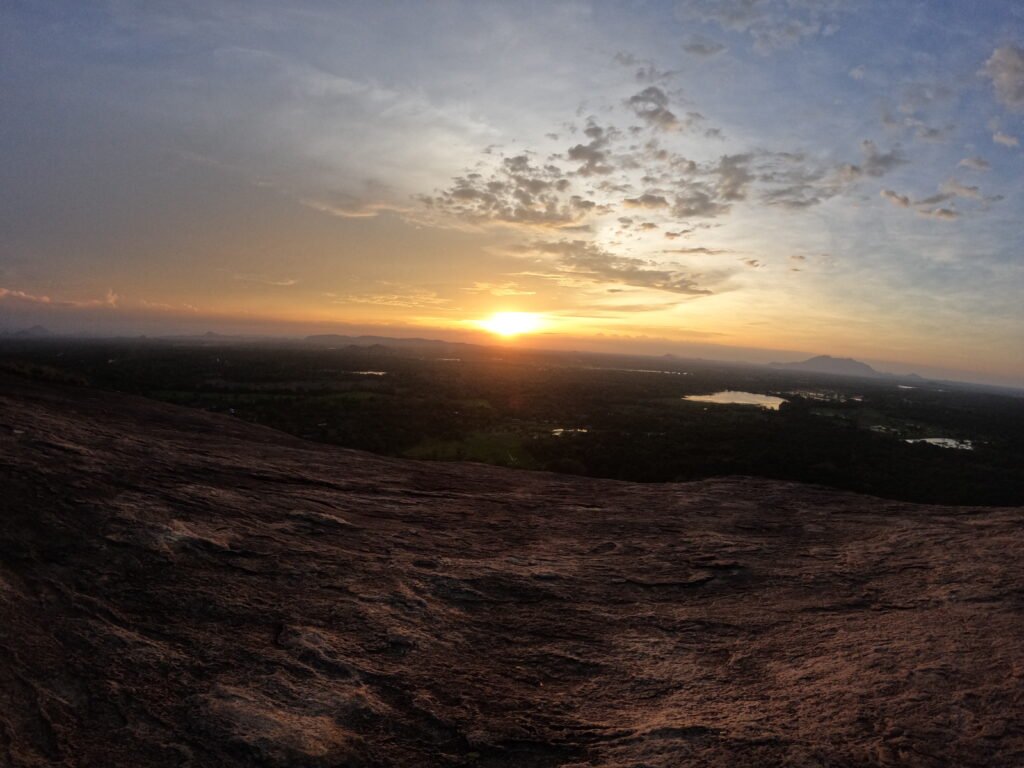
sunset-view-in-pidurangala | Sigiriya and Pidurangala
The View From the Top
Once you reach the top, you are rewarded with panoramic views of the surrounding landscape. The star of the show is Sigiriya Rock, which rises dramatically from the lush plains. The golden hues of the setting sun cast a magical glow over the scenery, making it a photographer’s dream. Monkeys are a common sight here, adding a touch of playfulness to the serene atmosphere.
Practical Tips
- Time Your Visit: Sunset is the most popular time to visit Pidurangala, so arrive early to secure a good spot.
- Stay Alert: Elephants are known to roam the area after dusk, so exercise caution when traveling by scooter or on foot.
After descending from Pidurangala, I enjoyed a hearty dinner at a local restaurant, savoring chicken kottu—a flavorful Sri Lankan street food dish.
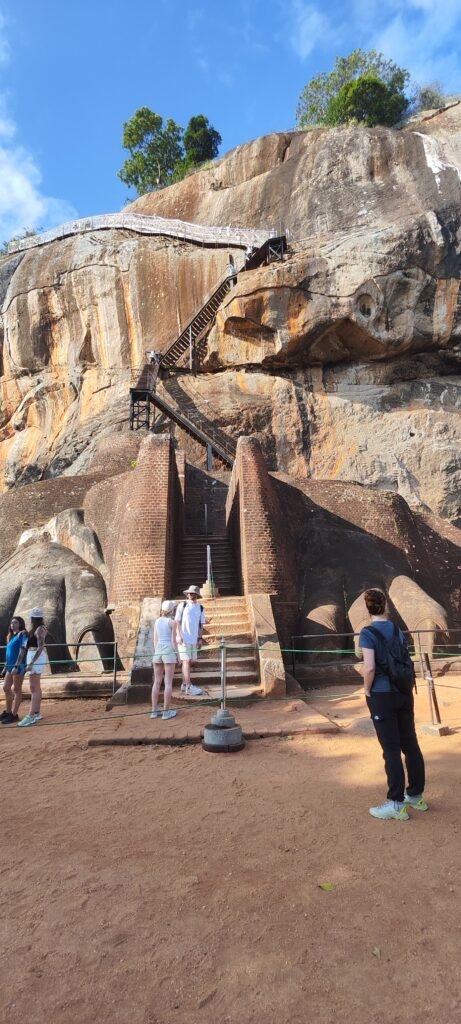
Sigiriya Rock Fortress: The Eighth Wonder of the World
Early Morning Start
The next day began early, around 7 am, to beat the crowds and the heat. Known as Lion’s Rock, Sigiriya is a historical and archaeological marvel that stands as a testament to Sri Lanka’s rich heritage. The entrance fee for foreigners is approximately $50, while locals pay around $1, reflecting the site’s cultural importance to the nation.

Historical Background
Sigiriya was built in the 5th century by King Kashyapa, who chose this natural rock formation as the site for his fortress and royal residence. The rock rises nearly 200 meters above the surrounding plains, offering strategic defense advantages and breathtaking views. According to legend, Kashyapa constructed this fortress to protect himself after usurping the throne from his father.
Exploring Sigiriya
- The Water Gardens: The journey begins at the base of the rock, where an intricate system of gardens, pools, and fountains showcases ancient engineering skills. These gardens are divided into water gardens, boulder gardens, and terrace gardens, each meticulously designed to enhance the aesthetic and functional aspects of the site.
- The Mirror Wall: As you ascend, you’ll encounter the Mirror Wall, which once shone with a polished surface so reflective that the king could see his own image. Today, it is adorned with ancient graffiti left by visitors centuries ago, offering insights into their impressions of Sigiriya.
- The Sigiriya Frescoes: The frescoes of Sigiriya are among its most captivating features. These colorful paintings depict celestial maidens, or “Apsaras,” adorned with flowers and elaborate jewelry. Created using natural pigments, the frescoes have stood the test of time and remain a highlight of the site.
- Lion’s Gate: The final ascent begins at the Lion’s Gate, where two massive lion paws carved from stone guard the staircase leading to the summit. These remnants give the rock its name, “Lion’s Rock.”
- The Summit: At the top, you’ll find the remains of King Kashyapa’s palace, including the royal baths, throne, and other structures. The view from the summit is nothing short of spectacular, offering a 360-degree panorama of the lush landscape below.
Practical Tips
- Bring Water: The climb can be strenuous, especially under the tropical sun.
- Wear Comfortable Shoes: The path involves steep stairs and uneven surfaces.
- Start Early: Arriving early not only helps you avoid the heat but also allows you to explore without the crowds.
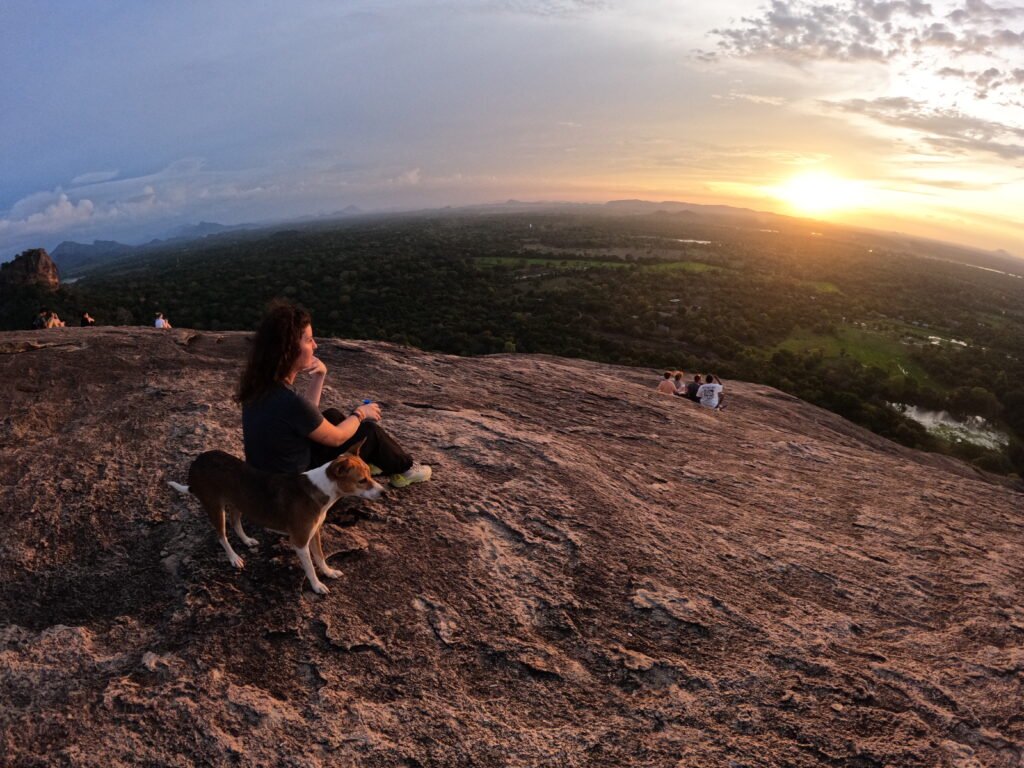
Beyond the Rocks: Exploring Sigiriya’s Surroundings
Wildlife Encounters
Sigiriya is not just about its historical and cultural significance; it is also a hotspot for wildlife. The area is home to a variety of animals, including elephants, monkeys, and a diverse array of bird species. Early morning and late evening are the best times for wildlife sightings.
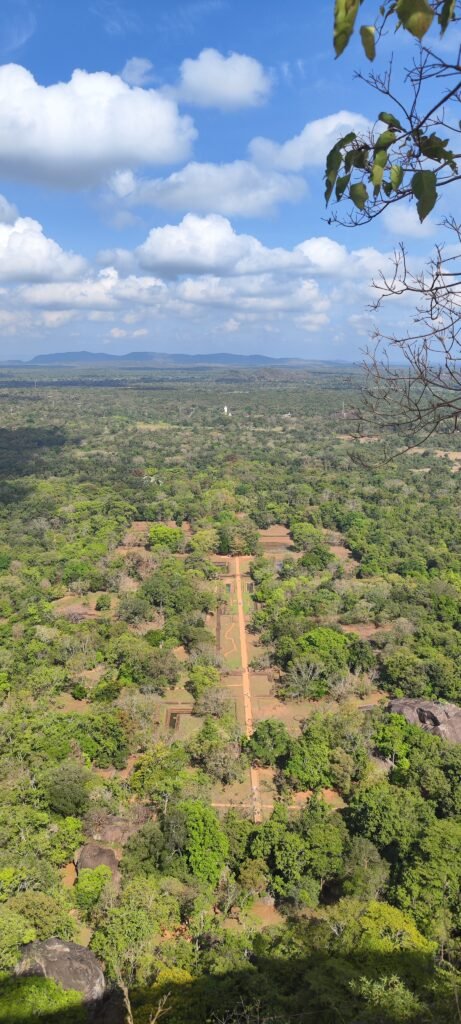
Local Cuisine
The local restaurants in Sigiriya offer a delightful culinary experience. From kottu to rice and curry, the food is flavorful and often cooked using fresh, locally sourced ingredients. Dining here provides an excellent opportunity to immerse yourself in Sri Lanka’s rich food culture.
Cultural Experiences
For a deeper understanding of the local culture, consider visiting nearby villages. Here, you can interact with locals, learn about traditional farming practices, and even participate in cooking classes.
Practical Travel Information about Sigiriya and Pidurangala
Getting There
- By Scooter: Exploring Sigiriya by scooter offers flexibility and a sense of adventure. However, be cautious of wildlife, especially elephants, when traveling at night.
- Public Transport: Buses and tuk-tuks are readily available for those who prefer not to drive.
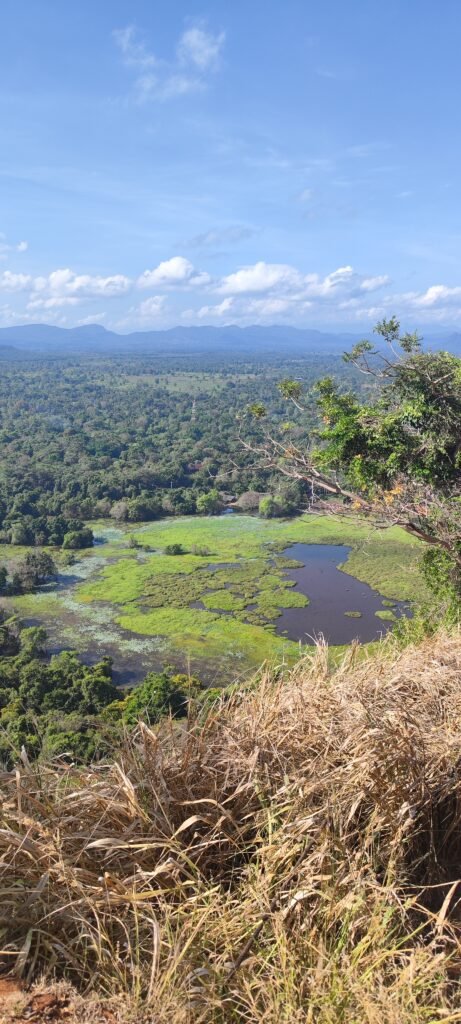
Accommodation
Sigiriya offers a range of accommodation options, from budget guesthouses to luxury resorts. Staying close to the site ensures you can start your explorations early.
Best Time to Visit
The best time to visit Sigiriya and Pidurangala is during the dry season, which runs from December to April. The weather is pleasant, and the paths are easier to navigate.

Conclusion
Sigiriya and Pidurangala offer a perfect blend of history, culture, and natural beauty, making them unmissable destinations on any Sri Lanka itinerary. From the awe-inspiring Sigiriya Rock Fortress to the serene Pidurangala Rock, these sites provide a unique window into the island’s past and present. Whether you’re a history enthusiast, a nature lover, or simply looking for breathtaking views, Sigiriya has something to offer everyone. So pack your bags, lace up your hiking boots, and get ready to create memories that will last a lifetime.
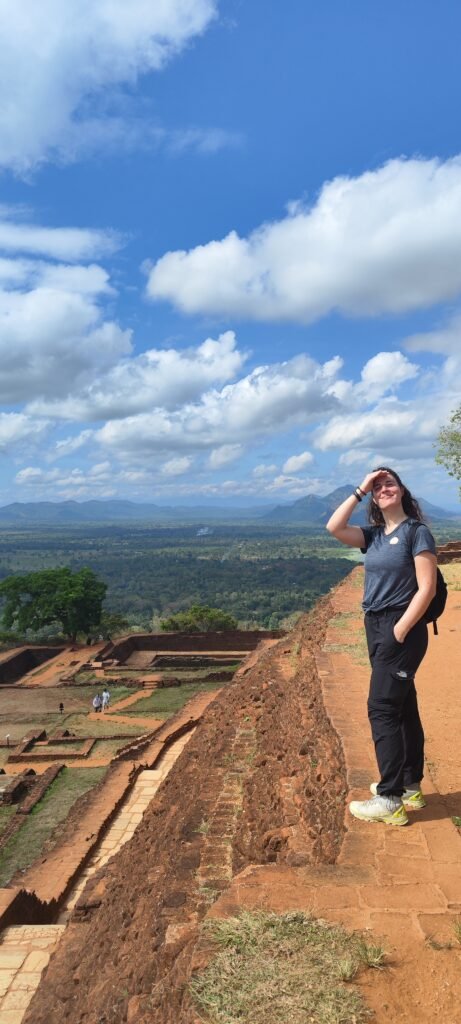
Visit our facebook page to see more images and info about Sigiriya and Pidurangala!
Visit our Instagram page to see more images and info about Sigiriya and Pidurangala!
Our YouTube Channel will be available soon to see more videos and information about Sigiriya and Pidurangala!
check our recent posts more like Sigiriya and Pidurangala

